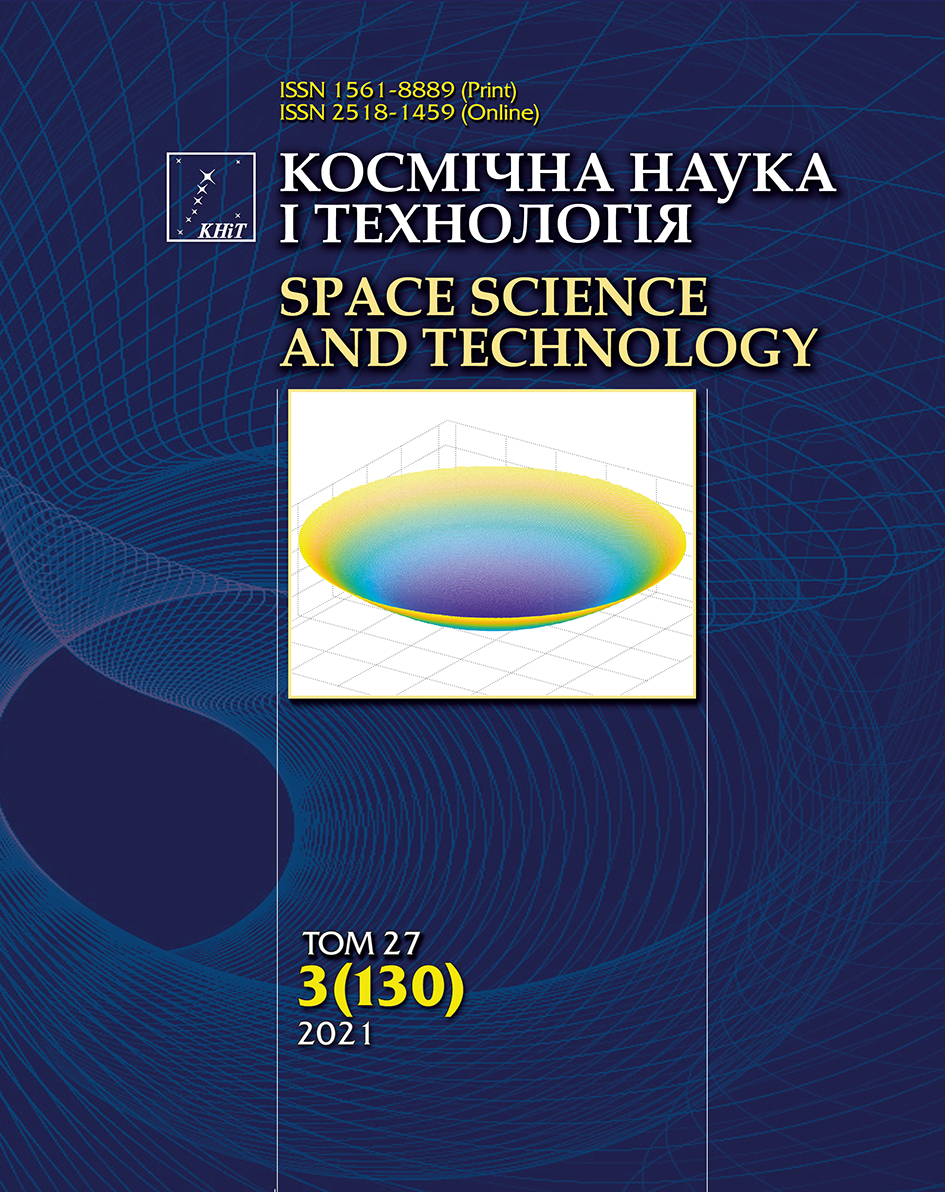On orbit serving — a step towards further exploration of near-Earth space
DOI:
https://doi.org/10.15407/knit2021.03.039Keywords:
geostationary orbit, inter-orbital transportation, on-orbit servicing, satellite, Servicer, spacecraftAbstract
The purpose of the publication is to draw the attention of the Ukrainian scientific and technical community to the development of a new area of activity in outer space - orbital service. The content, technical and economic preconditions and competitive advantages of its development in Ukraine are outlined. Definitions of orbital services such as customer inspection, orbital (inter-orbital) transportation, refueling and resupply, upgrade, assembly, collision avoidance are given. The competence of Ukrainian enterprises in this direction has been analyzed. The expediency and possibility of developing the direction of orbital servicing for further exploration of near space, in particular, the developments of Ukrainian enterprises for the development and manufacture of systems for rendezvous and docking of spacecraft, have been substantiated. Scenarios of interaction between a space service vehicle and a client vehicle in near-earth orbit are described. The basic requirements for carrying out of Servicer and the Client autonomous proximity operations, as well as the operation of seizing the client machine are given. Proposals for the functionality of spacecraft for the provision of orbital space services are presented, it is proposed to consider the need to create specialized cargo modules and examples of their application in orbit are given. The tendencies of the approach to the creation of spacecraft structures adapted for in-orbit service are considered. The predicted volume of orbital service operations by type of service and with orbits is given. Provided information about the key players in a given market. The design of Servicer, which is being developed by Kurs NPK JSC, Yuzhnoye Design Bureau, for the provision of transport services, is presented. The specified features of its construction in general and the composition of the modules, as well as the possibility of further expanding the functionality of the Servicer.References
Alpatov A. P. (2018). System analysis of space industry projects, dynamics and control of orbital complexes. Technical mechanics, No. 3, 121—137.
https://doi.org/10.15407/itm2018.03.121
Alpatov A. P., Goldshtein Y. M. (2019). On the choice of the optimal route for orbital service. Technical mechanics, No. 4, 21—28.
https://doi.org/10.15407/itm2019.04.021
Double launche: Technical report (2006). State Enterprise Design Office “Yuzhnoe”, No 21.15467.307 ОТ.
Vasylyev V. V. (2013). Introduction to on orbit servicing. Kyiv: Elmiz [in Russian].
Vasylyev V., Godunok L., Volkov V., Melnichuk S., Derkach S., Somov A. (2020). On construction of adaptable mutual measurements system for autonomous rendezvous of spacecrafts with non cooperative space objects. Space Science and Technology, 26, No. 3 (124), 42—54.
https://doi.org/10.15407/knit2020.03.042
Drоn N. М., Dubovik L. G., Kondratiev A. I., Horolsky Р. G. (2010). Calculation of performance characteristics of the space vehicle for collection of small-sized space garbage. Engine building bulletin, No. 1, 24—28.
Zaitseva A. Yu., Maslei V. H., Galaburda D. A., Belousov K. G., Moskalov S. I., Zaicev S. S., Shovkoplias Yu. A. (2015). Electrojet tugs for spacecrafts interorbital transportation. Space Science and Technology, 21, No. 5 (96), 24—27.
https://doi.org/10.15407/knit2015.05.024
Savchuk A. P., Fokov A. A. (2018). Determination of the parameters of uncooperative objects in the tasks of the orbital service. Technical mechanics, No. 4, 30—45.
https://doi.org/10.15407/itm2018.04.030
Fedorov O. P. (2019). Space activity: Approaches to strategy formation. Why space for Ukraine. Kyiv: Naukova dumka.
Shemshuchenko Y. S., Malysheva N. R. and others. Safety of space activities: legal issues. Kyiv: Research institute of State and law, National Academy of Sciences, 2018.
Davis J. P., Mayberry J. P., Penn J P. (2019). On-оrbit Servicing: Inspection, repair, refuel, upgrade, and assembly of satellites in space. Aerospace Corporation, Center for space policy and strategy.


